| Weather Fact: | Lightning sets about 10,000 forest fires every year in the United States. |
The previous topic reviewed the distinct air masses which cover the globe and contribute to the climate we experience. As well as these global wind patterns, there are lots of localised winds and weather phenomenon.
This topic will look at some of these world winds, and explore the facts and folk lore associated with them.
Haboob
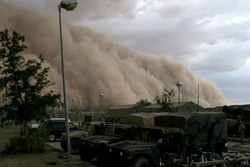
A Haboob wind is the name given to an intense, violent Sandstorm or Duststorm.
The word Haboob is from the Arabic word meaning phenomenon or ‘strong wind’.
Formed over dry desert land, and typically found in the Sahara, a haboob is a strong forceful downward wind, which picks up desert sand, dust and debris and blows it up hundreds of feet into the air.
This results in a wall of sand which can be as much as 100kms wide with wind speeds of up to 50kms per hour. A Haboob is usually followed by intense rain, which is so full of the sand and dust that the resulting rain is known as a mud storm.
Haboobs typically occur in Arabia, North Africa and India, but also occur in arid areas of the United States.
Foehn Wind
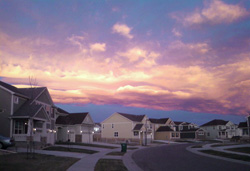
A Foehn wind is a hot, dry wind which is special to Mountainous regions across the world
The word Foehn is a German word which also means Hairdryer.
Foehn winds are known to create a dramatic rise in atmospheric temperatures, and can increase the temperature by as much as 30°C in just a few hours.
Like many strong winds, Foehn winds can also be destructive, and are associated with the spread of wild fires.
What causes Foehn Winds?
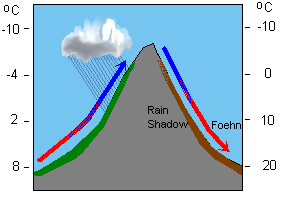
Wind is constantly moving air. When air meets a barrier like a mountain, it forces its way upwards and over in order to keep circulating.
As air moves upwards, the temperature decreases and the moisture droplets within the air condense to form rain clouds. The clouds reach saturation as the air climbs, and rain falls on the upwards slope of the mountain. The air which descends on the downward side, or the lee side, is very dry, and gets warmer and warmer as it filters down the mountain.
Foehn winds are often called 'Snow Eaters' due to their ability to make the snow melt.
Foehn wind is known by many different names depending on the area or region. Here are some of them:
- Chinook Wind – Rocky Mountains, USA & Canada
- Zonda Wind – Andes Mountains, Argentina
- Bergwind – Drakensberg Mountains, South Africa
- Helm Wind – Pennines, England
Mistral
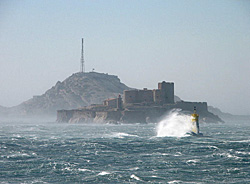
The Mistral is a strong, dry and cold wind which occurs in the Provence region of France.
The word Mistral means ‘Masterly’ in French.
The Mistral wind blows from the North and Northwest, and can reach speeds of up to 90kpm.
This northerly wind is an important element in the climate of the region, but also has far reaching affects on the weather in North Africa, Sicily and other Mediterranean countries.
Scirocco
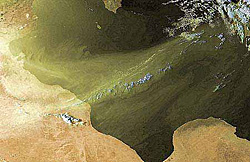
The Sirocco is the name given to the Southerly winds which extend across the Mediterranean Sea. This air mass covers a vast area, and takes on different characteristics depending on where in the region it is.
Originating in the Sahara, when the wind is blowing over North Africa it is very dry and fierce, but as it stretches across the sea, it picks up moisture and becomes considerably colder.
This damp, cold air brings storms to the Mediterranean coastline, and cold wet weather in Europe.
Sirocco winds can reach 100kph, and are most common during the Spring and Autumn. The high winds can last for a few hours or continue for several days. The winds pick up masses of desert sand which is blown into the towns and cities of Northern Africa, causing corrosion to buildings and statues and clogging machinery.
Harmattan
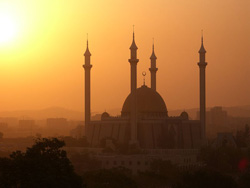
The Harmattan is a dry dusty wind which is commonly found in West Africa. It blows south from the Sahara during the winter time, from November to March, and can bring temperatures as low as 3°C.
The Harmattan wind collects sand and dust particles from the Sahara, and transports them across West Africa.
When this wind is particularly strong, the heavy dust in the air can have a very negative effect on visibility, and has been known to limit the Sun’s light for several days.
The dust clouds are like thick fog, and are known as the Harmattan Haze. The picture opposite shows the Abuja National Mosque in Nigeria surrounded by the haze.

